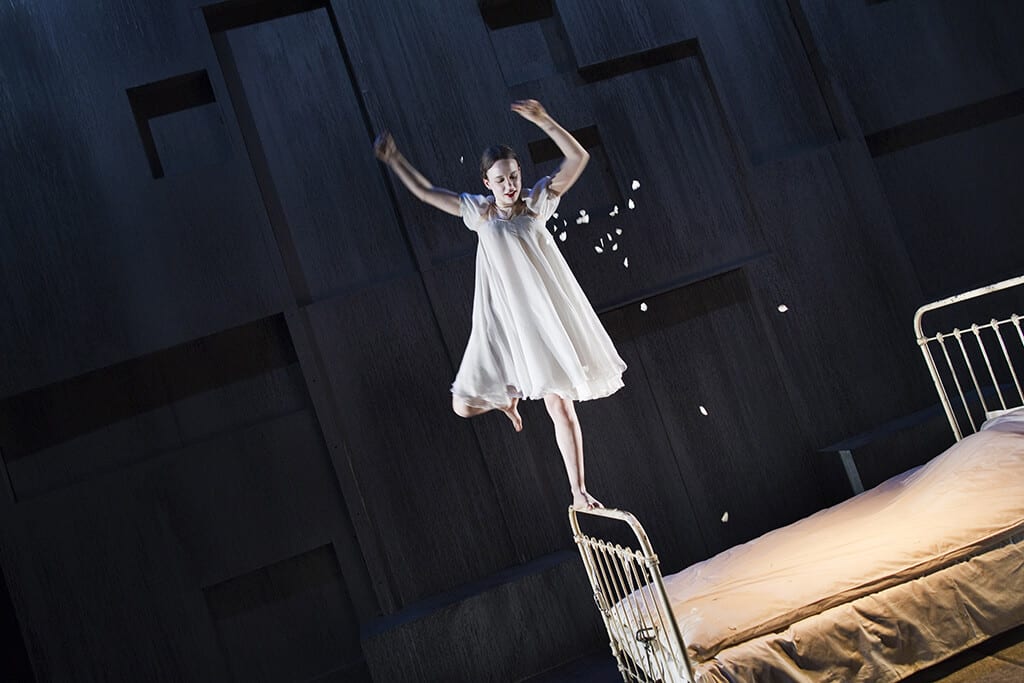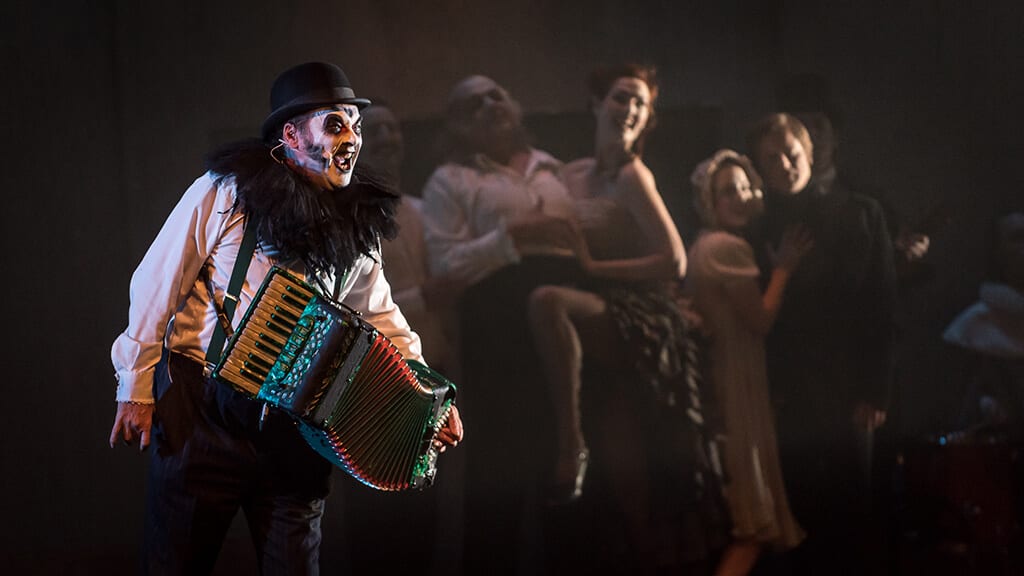The Tiger Lillies – described on Wikipedia as the forefathers of Brechtian Punk Cabaret – were never going to have a conventional take on Hamlet. The premise of the show seems to be that Jacques, as a kind of imaginary or invisible master of ceremonies, is commenting on the events of Shakespeare’s play as they unfold, often addressing characters and audience but rarely, if ever, getting involved. Although the arrangement is slightly difficult to get one’s head around at first, it works well – the narration in the form of The Tiger Lillies’ music provides a continuity which would otherwise be lacking, as the play is chopped up to a more manageable size than Shakespeare’s mammoth five-hour text.
There are often questions about how to read the characters in Hamlet: does Hamlet’s feigned madness become real? Do his problems with Gertrude’s marriage stem not only from sadness at his father’s death, but also from his own incestuous feelings for his mother? Does Laertes entertain similar desires for his sister Ophelia? For The Tiger Lillies, the answer to all of these questions is a resounding yes, and each character is confidently summed up. It is perhaps a shame that the performance doesn’t probe any deeper into the text, but it is also something of a relief to see a production with such clear-cut characterisation. Ophelia, one of Shakespeare’s most famous, and yet most silent, tragic heroines, is also given much more autonomy in this adaptation, as we see her daydreaming about her future with Hamlet, as well as her real grief at his abandonment of her – although it is surprising that her final speech, famous as it is, is cut completely.
On every level, this is a production which mixes the traditional and the modern with success: Shakespearian dialogue is interspersed with The Tiger Lillies’ contemporary lyrics, while the costumes draw inspiration from a number of sources, with Gertrude in a glamorous yet skimpy evening dress, and Hamlet in a suit with Elizabethan sleeves; Ophelia’s childishness is represented by a white dress and bonnet, while Polonius is dressed as a puppet. Some scenes are intensely physical, as when Hamlet argues with Gertrude and Ophelia; while the duel in the finale is only acted out, as Hamlet and Laertes stand on opposite sides of the stage, waving their swords towards the audience instead of each other. This is a show which is removed from both Shakespeare’s world and our own, which takes place in a murky, undefined, subconscious region, somewhere between the characters’ minds and our own.
Although there are some questionable choices in terms of the less traditional aspects of the production – there are moments, when characters are suspended from the ceiling like puppets, which could do with more clarification – there are also some highly successful choices. The projector is used thoughtfully, as when the ghost’s face is projected onto the bodies of the characters onstage, or when Ophelia, suspended on a wire, spins in mid-air against a backdrop of roaring waves. There are also several moments when the characters move in slow motion, or are frozen in tableau, and it is these moments of stillness, contrasted with the overwhelming cacophony that follows, that draw out the emotion in this production. We, like Hamlet, are bombarded by noise and people and ghosts and death, and we do not know, any more than he does, what to do.





